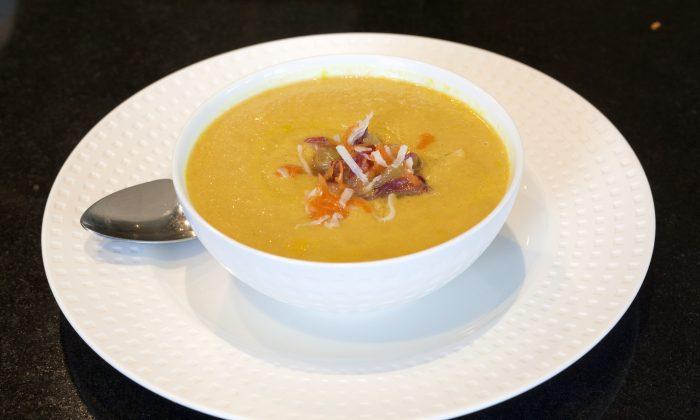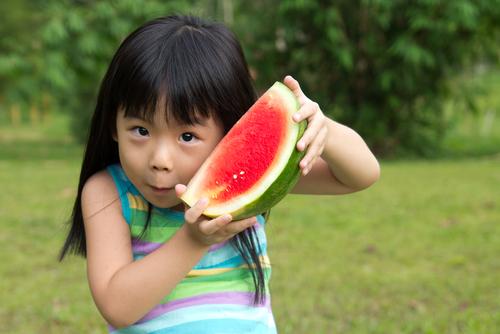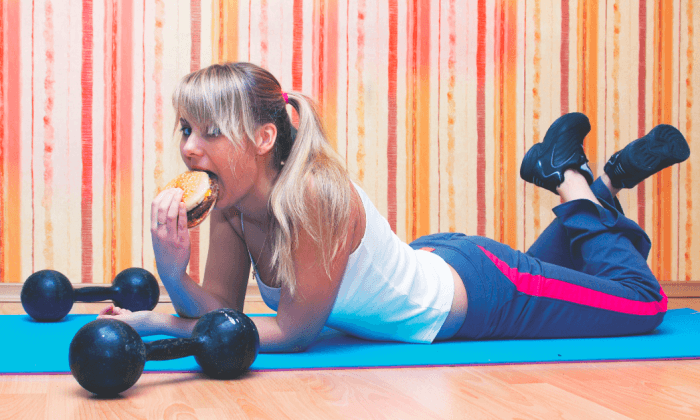It may seem easier to keep your kids out of the kitchen during dinnertime prep, but there’s no better way to cultivate a good palate. Studies show that children who are involved in the cooking process are 80 percent more likely to try new things.
Give your children simple tasks like washing vegetables, mixing ingredients, or pressing the start button on the blender. Allow them to pick and try out food as you’re prepping, and let them announce to the entire family how they helped make the meal.
If they turn their noses up, don’t give up. Let your child taste the food 21 times before you even think about trying something different. Taste buds are like muscles. They need to be conditioned, tested, and strengthened so that they can take on new flavors. To encourage this, you can vary textures and work more nutrient dense foods into the mix.
Here are some tried and true methods that have helped me get my pickiest eaters (my own kids) to get on the Fit Foody train:
Do it Raw
Try to get as much produce onto their plates in their raw state so they can really appreciate those pure flavors. The good news here is that kids love to crunch, and it’s a time saver because it’s one less thing to cook. Carrots, celery, cucumbers, jicama, sugar snap peas, and bell peppers are all great vegetable options. Some veggies get more palatable with a light steam, like broccoli and cauliflower.
Skinny-Dip
Offering a low-fat, high flavor dunker for your veggies is the perfect way to get them to indulge. It’s also fun. Remember, kids love to be creative and taking a carrot stick to a spread is like dipping a paintbrush. Make dips like cuke and dill Greek yogurt, artichoke hummus, and spinach pesto spread. These are great options that also pack a nutritious punch.
Get Saucy
One of the easiest ways to slip a ton of veggies into your kids’ meals is in a versatile sauce that goes the distance. I combine fresh spinach, kale, zucchini, bell pepper, tomato, garlic, and onion to make the base for my pizzas, pasta, bakes, soups, and stews. You’ve got supercharged nutrition in there, but no chunks. Make extra and freeze them in an ice cube tray for smaller servings. Plus, you can use a veggie peeler and make ribbons out of carrots, zucchini and yellow squash as an alternative to pasta. Double saucy bonus!
Bake it, Don’t Fake it
If the fluorescent colors and artificial ingredients in store-bought items sound unappetizing, join the club. I won’t buy those fakey-bakeys and neither should you. I want to tell you, you don’t have to be a pastry chef to pull off great baked goods. Beets, sweet potatoes, squash, apples, pears, and pureed berries can be traded in—trading out cholesterol and sugar—transforming baked goods into functional foods. Just like that, you have kitchen chemistry magic.
If you’re more comfortable using a baking mix, there are some good options out there too. Just look for the ones that contain whole food ingredients and no artificial sugars, chemicals or colors. Also watch out for excessive sodium.
Get Your Blender on
If you don’t have one already, get yourself a good blender stat! I can take coconut water or almond milk, throw in a couple of cups of fresh spinach, blueberries, and some high quality protein powder, add in a little flax seed and some crushed ice, and I’ve got serious satisfaction in a glass in a minute flat. It’s all about texture here. These are smooth, cool, and go down real easy. You can also make blender smoothies and protein drinks, then freeze them for a decadently delicious dessert.
Mareya Ibrahim is The Fit Foody, an award-winning chef on Everyday Health’s Emmy-nominated show “Recipe Rehab,” and author and founder of EatCleaner.com. Her book “The Clean Eating Handbook,” a guide on how to eat cleaner and get leaner, was released in May 2013.






Friends Read Free